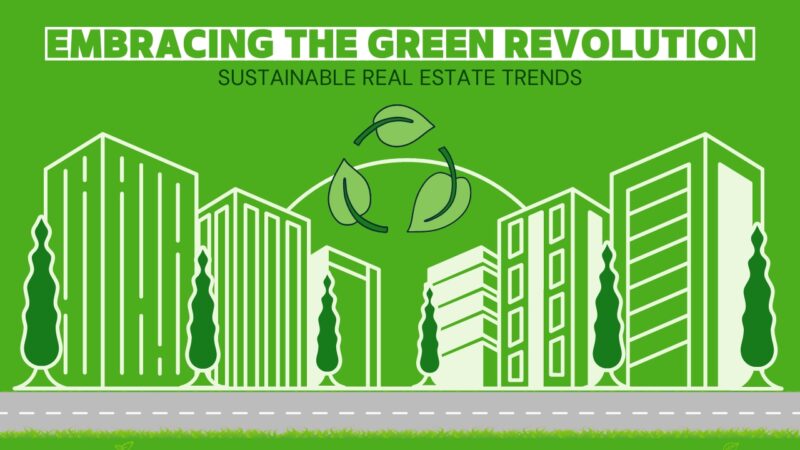Sustainable real estate, once a fringe movement, has rapidly moved to the center stage. The real estate industry is undergoing a seismic shift as sustainability becomes a key factor in the value, appeal, and functionality of properties.
This blog post takes an in-depth look at the major trends shaping the world of sustainable real estate.
The Rise of Green Buildings
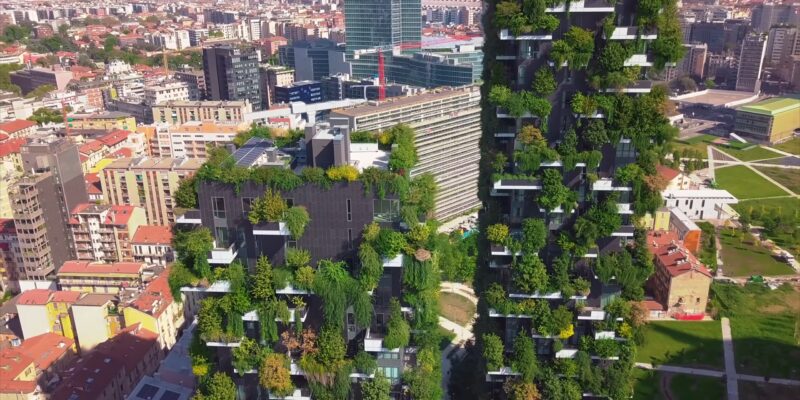
The ‘green’ revolution is gaining traction in real estate markets around the globe, and here’s why.
Green buildings are a primary trend in sustainable real estate. They are structures designed and built with sustainability in mind, optimizing energy efficiency, indoor environmental quality, and minimal disturbance to the natural habitat.
These buildings leverage natural resources, such as sunlight, wind, and rain, to provide inhabitants with light, air, and water, often reducing the reliance on artificial, energy-intensive systems. For example, well-positioned windows and solar panels can significantly reduce electricity costs.
Besides the monetary savings, these buildings also minimize their carbon footprint, contributing to the global fight against climate change.
The Economic Viability of Green Buildings
One might wonder about the economic viability of green buildings. The upfront cost might be higher, but the long-term gains are often substantial.
Investing in green building features is cost-effective over the property’s lifetime. Lower utility bills, higher property values, and improved occupant health are some of the economic benefits of green buildings.
Studies have found that workers in green, well-ventilated offices work better and are more productive. Furthermore, as energy prices rise and regulations tighten, green buildings are likely to become the norm rather than the exception.
Sustainable Urban Planning
Urban planning is another aspect of real estate that is embracing sustainability. Here’s how.
Planning for Climate Resilience
Cities are increasingly experiencing the impacts of climate change, including flooding, heat waves, and water shortages. Urban planners are now focusing on climate resilience, aiming to reduce these vulnerabilities.
Climate resilience involves creating spaces that can withstand and bounce back from climate impacts. It includes strategies like creating more green spaces to combat urban heat islands, designing buildings to withstand extreme weather events, and implementing water-saving practices.
By embedding climate resilience in planning strategies, cities can better protect their residents and infrastructure.
The Role of Green Infrastructure
Green infrastructure is another key aspect of sustainable urban planning. It refers to the network of natural and semi-natural areas that deliver ecosystem services in urban areas.
Green infrastructure includes parks, green roofs, street trees, and rain gardens, among other features. These elements absorb rainwater, reduce heat, filter air, and provide habitat for wildlife.
Green infrastructure also enhances property values and the quality of life for city dwellers. Thus, more cities are incorporating it into their urban planning frameworks.
The Emergence of Net-Zero Energy Buildings
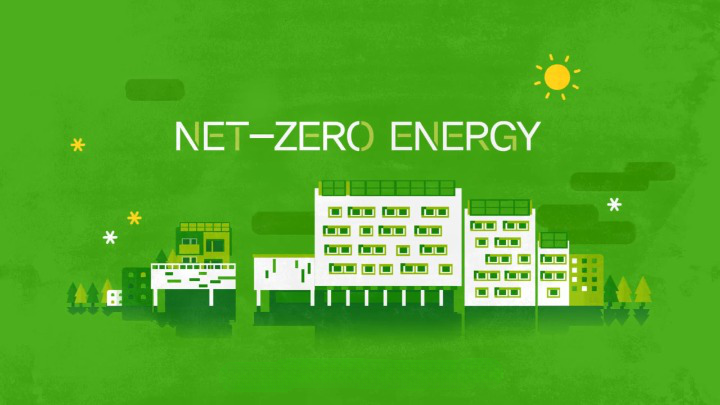
Net-zero energy buildings are a revolutionary concept in sustainable real estate. They are designed to produce as much energy as they consume over a year, making them highly energy-efficient.
Benefits of Net-Zero Energy Buildings
Net-zero energy buildings bring a myriad of benefits, including reduced energy bills, increased property value, and resilience to power outages.
For property owners, reduced energy consumption translates to lower energy bills. Additionally, such buildings often have a higher property value and are more attractive to potential buyers or tenants.
During power outages, these buildings can continue to function using the energy they’ve generated and stored.
The Challenge and Promise of Net-Zero Energy Buildings
However, achieving net-zero energy status is not without its challenges. It requires careful design, construction, operation, and maintenance.
The high initial costs can also be a barrier. Yet, the promise of these buildings is enormous.
They are not only a significant step toward energy efficiency and carbon neutrality but also a sound financial investment in the long run. As technologies advance and costs decrease, the future of real estate could very well be net-zero energy.
Energy-Efficient Retrofitting
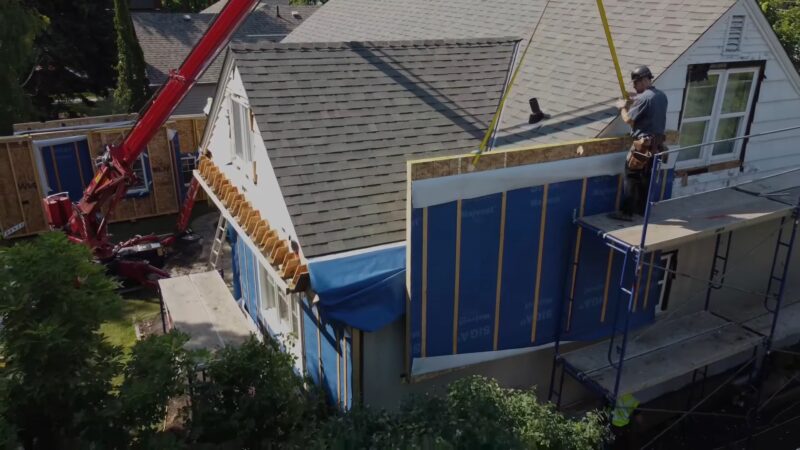
Energy-efficient retrofitting involves upgrading existing buildings to reduce their energy consumption. It’s an essential part of sustainable real estate, given that many existing buildings are energy-inefficient.
The Importance of Energy-Efficient Retrofitting
Existing buildings make up the majority of the built environment, and many are far from energy-efficient. Retrofitting these buildings can significantly reduce energy consumption, lower carbon emissions, and save money.
In a typical energy-efficient retrofit, improvements may include upgrading insulation, installing energy-efficient appliances, and replacing old windows with double-glazed ones. As a result, property owners can expect to see a decrease in energy costs and an increase in the comfort and value of their property.
Policy Incentives for Retrofitting
Governments around the world are recognizing the value of energy-efficient retrofitting and are introducing policies to encourage it. Incentives may include grants, tax breaks, and low-interest loans.
Policies also aim to create a market for energy efficiency by setting standards and requiring energy labeling for properties. This allows potential buyers or tenants to consider energy efficiency when choosing a property, making it a competitive advantage.
The Growth of Eco-Districts
Finally, eco-districts represent a holistic approach to sustainable real estate, where entire neighborhoods or districts are designed with sustainability in mind.
What are Eco-Districts?
Eco-districts are areas within a city where advanced sustainability practices are implemented at a community level. These districts aim to combine sustainable architecture with sustainable urban planning, creating synergies for greater overall sustainability.
The key features of eco-districts often include:
- High levels of green space
- Well-insulated homes with renewable energy systems
- Extensive cycling infrastructure and limited car use
- Locally sourced materials and circular economy principles
Benefits and Challenges of Eco-Districts
Eco-districts offer many benefits, including increased energy efficiency, improved biodiversity, and enhanced community well-being. However, they also present unique challenges, such as the need for cross-sector collaboration, significant initial investments, and ongoing commitment to sustainability goals.
Despite these challenges, eco-districts are a promising trend in sustainable real estate, showing the way toward more sustainable, resilient, and liveable cities.
FAQs
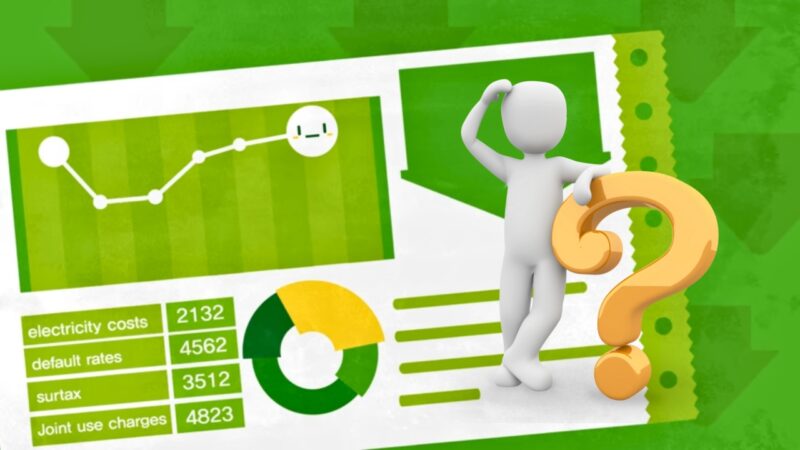
What is sustainable real estate?
Sustainable real estate aims to meet the needs of the present generation without compromising the ability of future generations to meet their own needs. This involves creating buildings and communities that are environmentally responsible, socially equitable, and economically prosperous.
What are the current trends in sustainable real estate?
The current trends in sustainable real estate include a focus on decarbonization, adoption of low-carbon technologies, upgrading to eco-friendly lighting systems, and incorporating climate change risks into asset and portfolio valuations. There is also a growing interest in new construction methods and materials that are more sustainable.
What is the role of technology in sustainable real estate?
Technology plays a significant role in sustainable real estate. New technologies are being adopted for low-carbon heating and cooling and eco-friendly lighting systems. The real estate sector is also exploring the use of cryptocurrencies for property transactions.
What is the impact of sustainable real estate on carbon emissions?
The real estate sector is responsible for about 40% of global carbon dioxide emissions, with nearly 70% of these emissions coming from building operations. By focusing on sustainability, the real estate sector can significantly reduce its carbon footprint.
What is the importance of energy efficiency in sustainable real estate?
Energy efficiency is a key aspect of sustainable real estate. Buildings that are energy-efficient not only reduce carbon emissions but also lower energy costs. This is achieved through the use of renewable energy sources and zero fossil fuels on-site.
What is the role of ESG professionals in sustainable real estate?
ESG (Environmental, Social, and Governance) professionals play a crucial role in sustainable real estate. They help real estate companies reduce emissions and energy across their portfolios, stay abreast of reporting requirements and regulations, and incorporate ESG considerations into their business operations.
How is sustainable infrastructure being incorporated into real estate?
Sustainable infrastructure, such as electric vehicle charging stations and on-site solar generation, are becoming the norm in real estate. These amenities not only help with decarbonization but also attract potential tenants and reduce utility bills.
What is the significance of biodiversity in sustainable real estate?
Biodiversity is a growing concern in the real estate sector. Real estate organizations are expected to act on ongoing nature-related risks and contribute to stopping biodiversity loss by 2030.
What are the challenges in sustainable real estate?
Some of the challenges in sustainable real estate include the lack of standardization in measuring sustainability, the high initial investment required for green building and technology, and the affordability of energy-efficient and renewable energy products, especially for low-income communities.
What are some of the standards and certification systems for green building?
Some of the top standards and certification systems for green building include LEED (Leadership in Energy and Environmental Design), BREEAM (Building Research Establishment Environmental Assessment Method), ENERGY STAR Certification, WELL Certification, Fitwel Certification, Living Building Challenge, and SKA Rating System.
Final Words
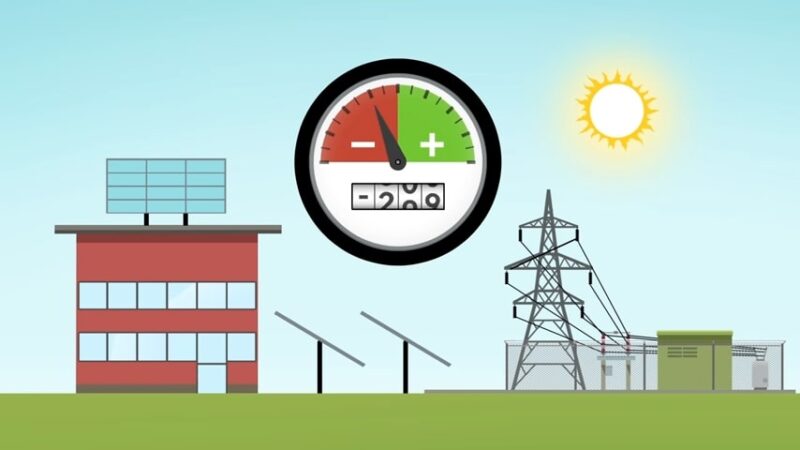
As this deep dive into the world of sustainable real estate shows, sustainability is not just about reducing environmental impact. It’s about creating better places to live, work, and play.
With continued innovation and commitment to sustainability, the future of real estate looks bright indeed.
